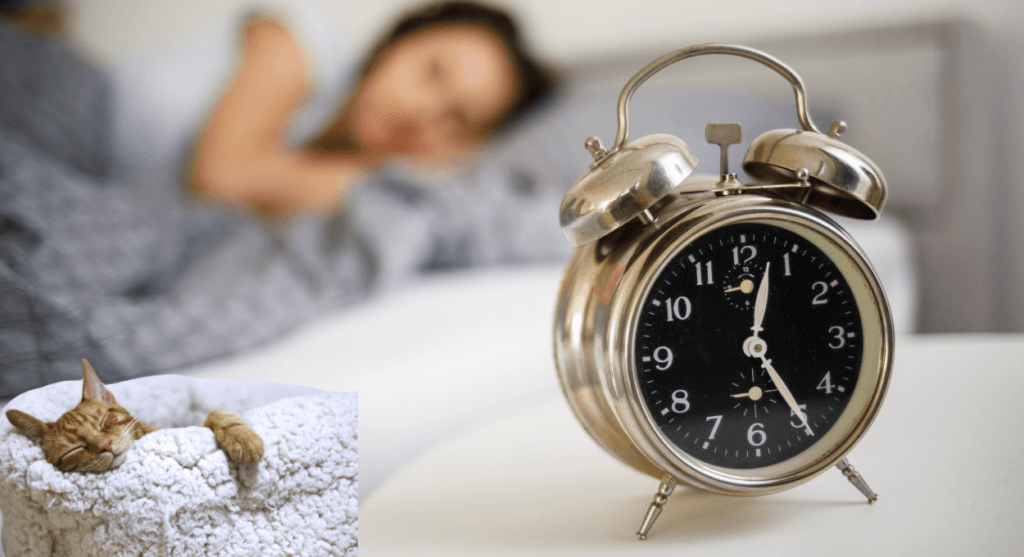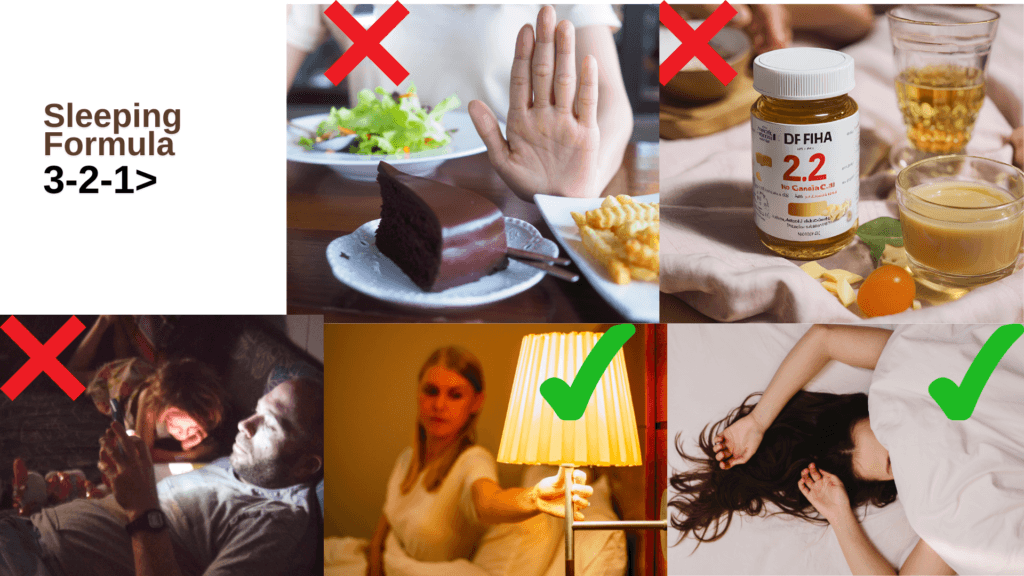
You are not the only one who has ever found themselves having trouble sleeping or looking at the ceiling. It might be difficult to wind down at night because of our hectic schedules, but what if a quick 3-step regimen could help? Discover the 3-2-1 rule for better sleep, a technique that is becoming popular due to its ease of use and efficiency. Here’s an examination of each step’s operation, advantages, drawbacks, and durability.
The 3-2-1 Rule: The Fundamentals
3 Hours before bed:-Cut off heavy meals and caffeine and alcohol intake.
2 Hours before bed:-Put an end to your work and stay away from displays (yes, that includes your final phone swipe).
1 Hour before bed:- Start a calming, pre-sleep routine to signal your body know it is time to sleep.
Every step has a function in facilitating the natural transition of your body and mind into a state of rest. Let us examine each one’s operation.
How the 3-2-1 Rule Operates Step-by-Step

3 Hours Before Bed: No More Alcohol, Caffeine, or Large Meals
A restless night can result from consuming a large meal or coffee too soon to bedtime. Caffeine can keep you awake and interfere with your sleep cycle since it stimulates the central nervous system. Alcohol tends to disrupt deeper stages of sleep, which frequently results in awake later in the night, even if it may make you feel sleepy at first.
Allow your body to stabilise and digest food, which improves the quality of your sleep. Additionally, if you lie down with a full stomach, this procedure can help you stay awake by reducing heartburn and acid reflux.
2 Hours before bed;-Work and screen time should be finished
Late-night work or email checks can keep your mind racing, and blue light from computers, tablets, and phones can interfere with melatonin, your body’s natural sleep hormone. The hormone that signals when it is time to go to sleep, melatonin, can be disrupted by screens, making it more difficult to fall asleep.
Cutting out screens and work two hours before bed will therefore assist your mind in stepping out of “work mode.” Additionally, you prevent the blue-light impact, which enables melatonin to begin its function.
1 Hour Before Bed: Time to Relax
The best thing is that it is all about winding down in the final hour before bed. Establishing a relaxing routine that signals your brain when it is time to sleep is the goal here. This could be reading, practicing meditation, stretching lightly, or enjoying some calming music. Steer clear of very stimulating activities, such as strenuous exercise or tense television.
This action can help lower anxiety and stress levels, which can both disrupt sleep. Your body and mind will transition into sleep mode more easily if you are doing something relaxing, which will help you fall asleep more easily.
Benefits of the 3-2-1 Rule Better Sleep
Improved Sleep Quality: Many people report deeper, more restful sleep by consistently following the 3-2-1 rule. Each step helps reduce potential sleep disruptions, like indigestion and the stimulating effects of screen time.
Reduces late-night Stress and anxiety: Shutting down work and screens earlier gives you a mental break and helps keep your mind from racing. This is especially helpful for people with busy, work-filled days.
Establishes a Bedtime Routine: One of the biggest challenges with sleep is creating consistency. The 3-2-1 rule acts as a structured wind-down routine, making it easier for your body to know when it’s time to sleep.
Lessens Sleep-Related Health Issues: By avoiding large meals and caffeine close to bedtime, you reduce risks of acid reflux, heartburn, and other digestive issues that can affect sleep.
Drawbacks of the 3-2-1 Regulation

Despite its apparent benefits, the 3-2-1 rule has drawbacks:
Hard to Adhere to Consistently: In practice, it can be difficult to follow this guideline each night. Life can disrupt the 3-2-1 timetable, whether it is a last-minute late meal or completing work emails.
May Not Work for Severe Sleep Disorders: The 3-2-1 rule may not be sufficient for individuals who suffer from severe sleep disorders, such as persistent insomnia. A more individualised treatment strategy, perhaps including medical guidance, may be required in those situations.
Adjustment Period: Giving up screen time or working two hours before bed may initially feel restricted if you are accustomed to working late or checking your phone before bed.
Is it effective?
Although there is not much research on the 3-2-1 rule precisely, sleep science supports each stage. According to studies, stimulating activities, blue light exposure, and eating right before bed can all affect how well you sleep. Therefore, lowering these variables has been shown to improve sleep.
Similar to the 3-2-1 rule, clinical psychologist and sleep specialist Dr. Michael Breus frequently suggests screen-free time and relaxing nighttime rituals. The notion that regular bedtimes and less screen time result in higher-quality sleep is further supported by research published in the Journal of Clinical Sleep Medicine.
The 3-2-1 rule for sleep is a promising and doable way to wind down, but it may not be a panacea. It gives your body and mind the signals it needs to let go of the day by providing a smooth transition into sleep. You might discover a rhythm that suits you if you try every step, even if you can not maintain it every night. Rest well, and let us hope for fewer nights of insomnia!


